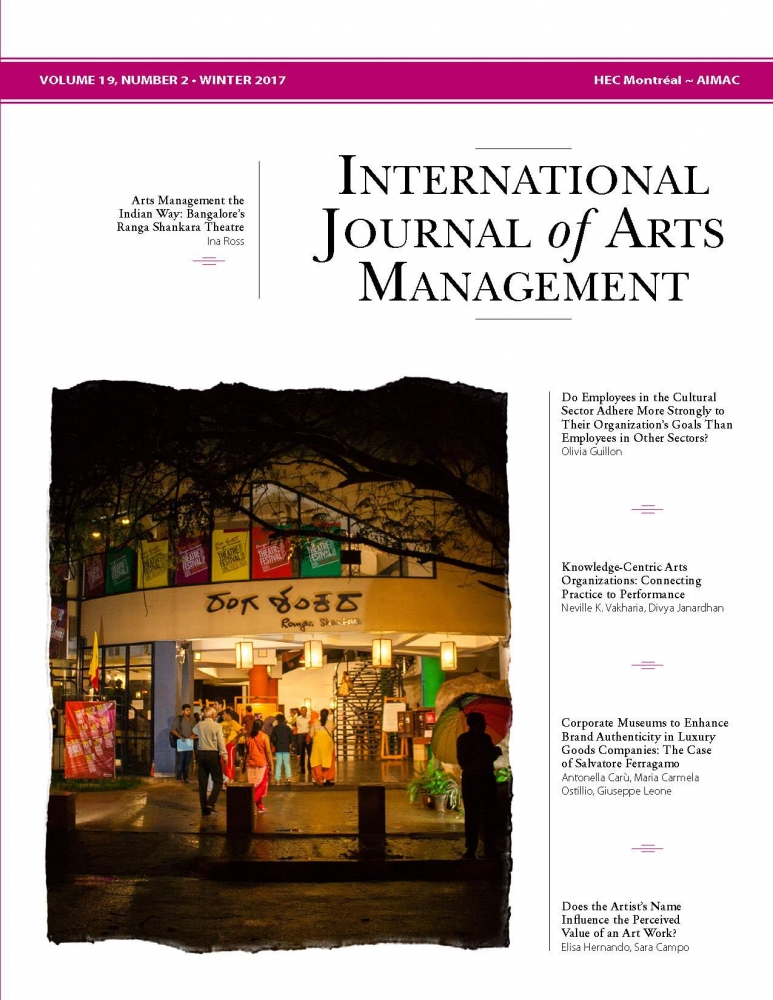IJAM Volume 19 Number 2 (PDF)
Product: Journal
$53.00 CA
EDITOR’S NOTE
This Winter 2017 issue of the Journal covers three broad themes: human resources, management, and marketing research in arts and culture.
Our first article, by Olivia Guillon, explores a topic that will be of interest to all those who manage or teach how to manage cultural organizations. Based on a French national survey on job satisfaction and engagement, the article examines whether employees working in cultural organizations adhere more strongly to company goals than people employed in other sectors of the economy. Refuting generally accepted ideas, the author provides insightful explanations for the little variance observed in job satisfaction and engagement for arts managers and employees, while identifying a few distinctions.
In our second article, Neville K. Vakharia and Divya Janardhan analyze the concepts of knowledge-centric organizations in the performing arts sector in order to understand how management practices may relate to financial and operational performance measures. Based on the results of a survey of small to mid-sized performing arts organizations in the United States, the authors identify a potential gap between organizations’ practices and their performance, as well as seven performance metrics that are positively associated with knowledge-centric practices.
The third contribution in this issue, by Antonella Carù, Maria Carmela Ostillio and Giuseppe Leone, provides insights into the role that corporate museums play in strengthening a brand and a company’s heritage. The authors analyze the authenticity associated with the Salvatore Ferragamo brand and how its corporate museum contributes to this authentication, both within the company and outside it.
Also related to the question of brand equity is the next article, by Elisa Hernando and Sara Campo, which investigates whether an artist’s name affects the perceived value of a work of art. The results reveal that the name of the artist as a brand name influences the general and economic assessments of his or her work and what a collector is willing to pay for it.
Finally, Ina Ross presents a Company Profile on the Ranga Shankara theatre in Bangalore, India. This is a thought-provoking case study of how a colonial legacy institution can succeed by reaching out to the local community and developing a strong brand narrative.
André Courchesne
Editor
